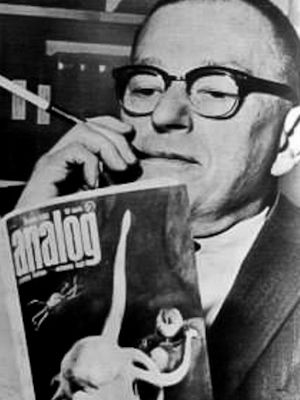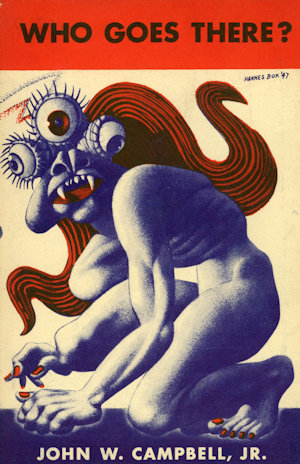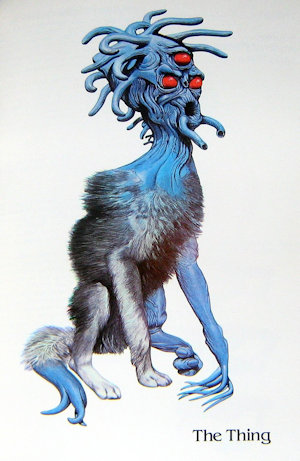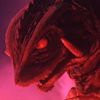"Who Goes There?" by John W. Campbell - Sci-Fi Classic Review
Welcome to THINGTOBER! A hostile alien has been revived in a remote Antarctic research station, and we have just one month to deal with it. Starting with John Campbell's classic novella "Who Goes There?" and then carefully dissecting the three films based on its ideas--The Thing from Another World, John Carpenter's The Thing, and 2011's The Thing--we will try to determine what makes this terrifying monster tick and whether or not we can ever be sure it's not right next to us, poised to take over the world.
 | | An important man, but not a good role model |
Before we get started on our discussion of the story that may have launched an entire branch of sci-fi/horror, we need to talk about John W. Campbell, one of the more problematic figures from the Golden Age of Science-Fiction. On one hand, he was one of the most important science-fiction editors of all time, instrumental in launching the careers of all of the "Big Three" (Asimov, Heinlein, and Clarke) as well as numerous others. He is credited with almost single-handedly pulling science-fiction out of the pulpy muck in which he found it and into a more credible realm of literary genre fiction.
On the other hand, he was, by nearly all accounts, a big ol' racist, even by the standards of his day. On top of rejecting African-American authors and stories with "negro" protagonists, he also embraced a lot of unpleasant views regarding the American Civil War and slavery that would absolutely put him at the top of many people's black list today (including my own). While his contemporary defenders chalked it up to his being a provocateur, the sheer volume of Campbell's upsetting statements on questions of race, especially during the latter half of his career, is proof enough that he held most of the offending views as his own. He also infuriated many of his protegés--nearly all of whom abandoned him during his last twenty years--by a full-throated embrace of pseudoscience, all but insisting that every writer who worked for him would have to include something about psychic nonsense or extra-sensory perception in their stories.
With all of that disclaimed, one of his most significant contributions outside of his editorship of Astounding Science Fiction is the writing of a novella published in 1938 called "Who Goes There?" The story has a relatively simple premise: a frozen alien is discovered beneath the ice of Antarctica and is thawed out at an isolated research station, but it turns out it's still alive and needs to attack the handful of men there in order to survive. The spin here, aside from the cool setting (pun intended), is that this alien is capable of mimicking the biology of any living thing it encounters and can read men's minds. After it reveals its powers to the researchers, what follows is a rapid descent into panic, paranoia, and madness as the survivors rush to figure out a test that can prove who is a mimic and who is still human before the Thing finds a way to escape to civilization and conquer all of humanity.
 | | I've seen crazier redheads |
Despite being a hardcore fan of John Carpenter's The Thing, 1982's film adaptation of the story, I must admit I hadn't read "Who Goes There?" before doing so for the purposes of this review. Based on how different the 1982 film is from the earlier film adaptation, 1951's The Thing from Another World, and a few things I'd encountered over the years, I assumed the story had little relation to the film I'd grown to love so much. You can imagine my surprise, then, by how much the two versions have in common.
The alien shapeshifts. It's called "the Thing" (capitalized, too). Much of the named research crew is the same, albeit with a few cosmetic differences and some swapped character traits and ultimate fates. Many of the logical problems presented are the same, with characters insisting they prepare their own food, gather together in groups, and watch each other. The scene with the dogs is there. The famous blood test scene is there. The hero, MacReady, behaves in much the same way, including weilding fire as his weapon of choice against the monster. Blair remains isolated for most of the story only to be revealed as a Thing in the final moments, after it spent time building its own mode of transportation. But most importantly, the overriding sense of dread is absolutely there.
There are some differences, of course. Perhaps the biggest is the Thing's psychic powers, which are hinted at early on through characters revealing nightmares that predict what's about to happen. This is an interesting wrinkle, and it helps close a lot of the nitpicky perceived plot holes of the film. It naturally demonstrates the kind of thing Campbell would later be infamous for, but it also works quite well as a plot device within the story. (I'm glad it's not in the 1982 film, though.) Interestingly, Campbell's science isn't all that bad in other aspects, even going so far as to call out bits of common scientific-sounding wisdom that are patently untrue.
There's also the size of the crew, which is significantly larger in the story. This is downright unweildy in the novella, and one of its biggest problems. There are a total of 36 men in the station, and most of them remain unnamed. The few that do get named are constantly walking in and out of scenes, often in mid-dialogue, and it's nearly impossible to keep track of them all from one moment to the next. This makes tracking each character and trying to piece together a reasonable sequence of events--one of the best things to do with Carpenter's film adaptation--completely impossible.
 | | Art by Wayne Douglas Barlowe from Barlowe's Guide to Extraterrestrials by Ian Summers |
That's because, unfortunately, "Who Goes There?" isn't a well-written novella. It has some great descriptive scenes of Antarctica and the inside of the station, but its pacing is jarringly uneven, with constant starts and stops that will give readers whiplash. For example, there could be five or six long paragraphs of dialogue in which characters discuss the predicament they're in and propose solutions, followed by one short paragraph of action in which they reveal and kill someone who is a Thing, followed again by another five or six long paragraphs of ponderous dialogue. Also, the story is about ninety percent dialogue, with all the characters sounding identical to Campbell. At the start, for instance, after Campbell sets the scene with some vivid imagery and poetic license, he has MacReady address the men and offer a few paragraphs of florid, detailed description of another scene that would sound wholly unnatural as something delivered aloud and casually. One of the most infuriating aspects of the writing, though, is that it's just confusing. A lot of critical moments, details, and plot beats are inadequately explained or described, leaving the reader at a greater disadvantage than the characters.
It's remarkable, then, that through this sloppily written work (dare I say it could use a good editor), profound ideas, a thrilling mood, and the sheer horror of events shine. It's a brilliant piece of paranoia, and characters react to it in logical, irrational ways. Considering its age, it's also remarkable how original its ideas were. The underlying concept of a space alien picking off an isolated crew in a kind of sci-fi slasher story was utterly unheard of, and it served as the inspiration for an enormous subgenre, popularized perhaps most famously by Ridley Scott's Alien, itself strongly inspired by Campbell's novella.
Campbell doesn't get into the philosophical or socio-political implications of his story--which, considering his views on the matter, is probably a good thing--but the potential for allegorical subtext is present. It can be read as a precursor to the red scare or any similarly paranoid political movement, or it can be read as a tretise on religion or insanity. The way Campbell psychologically breaks down his characters is genuinely fascinating, even though there is little time spent on character development itself. No matter how you read it, though, it taps into something innately visceral and frightening, and for that alone, despite being poorly written, "Who Goes There?" deserves the praise it's accumulated over the years. I'm ashamed it's taken me this long to get around to it.
-e. magill 10/4/2018
THE UNAPOLOGETIC GEEK'S
THINGTOBER: | |
|
| MORE LIKE THIS: |

|
The Gamera Trilogy Review
During Japan's Heisei era, a trio of Gamera films were released that should silence all of the giant turtle's detractors. [8/23/2018]
|
|
|
|
|